
Which Mushrooms NOT To Eat: A Quick Guide
You probably know that some mushrooms can be extremely poisonous, but you may not know much more than that. In this article, we take a look at 18 poisonous mushrooms found throughout the world. Keep reading to find out which ones you definitely don't want to eat.
Poisonous mushrooms should not be eaten! That probably sounds like an obvious statement, and it is, though poisonous mushrooms may not look so obviously toxic. Many look similar to totally edible mushrooms, and others just look dull and innocuous, but behind a bland facade lives an array of toxic compounds.
Here we look at 18 of the most poisonous mushrooms in Europe and North America, though some of these are found in parts of Africa and Asia as well. Keep reading to find out what not to eat!
Why avoid eating certain mushrooms?
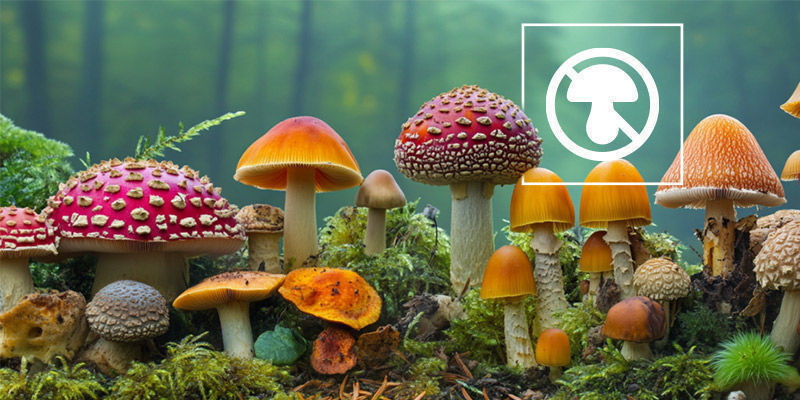
Certain mushrooms, as you’ve probably heard, can be fatal if consumed. While some are delicious and others invoke powerful psychedelic experiences, others can shut your kidneys, liver, or heart down and kill you—with the process sometimes taking weeks.
So, if that doesn’t sound like something you fancy, it’s a good enough reason not to eat certain mushrooms.
These poisonous mushrooms contain a range of different compounds that affect the body in a variety of ways, with most being non-lethal and causing moderate to severe gastrointestinal upset. That said, around 1–2% of mushrooms are lethal if ingested.
Poisonous mushrooms have adapted in such a way to avoid being eaten so that they can spread their spores and reproduce. Potential predators include insects, deer, and humans, so repelling these dangers is crucial.
There are specific features that distinguish poisonous mushrooms from edible ones, so if you are to be safe, you have to identify each mushroom down to its species, otherwise you’re foraging in the dark! Mushrooms aren’t like insects—they don’t display their ferocity with bright colours or sharp features; some of the most deadly mushrooms look totally harmless, so tread carefully.
Top 18 poisonous mushrooms to avoid
Below, we take a brief look at 18 poisonous mushrooms found in the US and Europe that should be avoided at all costs. It should be noted that this list is not an identification guide, so if you go foraging, find a better resource than this!
Death cap
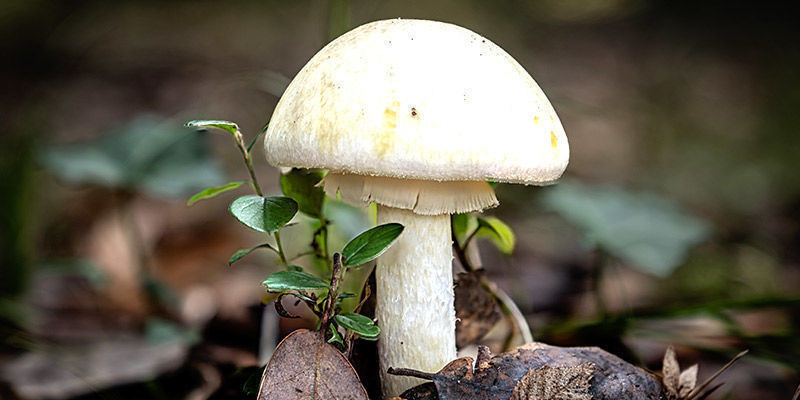
The death cap sounds as deadly as it is, and it earned its name for good reason. This is considered the most toxic mushroom in the world and is common in the UK and Europe. Half of a mature mushroom is considered to be enough to kill an adult, and due to this and their similarity to edible mushrooms, they constitute around 90% of mushroom deaths per year! Known as Amanita phalloides, the death cap looks decidedly edible, with a fleshy white stem and cap that look fairly succulent. But make no mistake, it can kill people within 6–12 hours after ingestion, with the liver taking the brunt of the toxins.
Destroying angels
Destroying angels is the common name for a range of Amanita toadstools, including the death cap. These mushrooms, which include Amanita muscaria (fly agaric), tend to have large caps and look like they come from a fairy tale. Inviting as they may seem, all of these fungi should be steered well clear of, as they each have the potential to kill in a most unenjoyable fashion.
Conocybe rugosa
Containing the same mycotoxins as the death cap, Conocybe rugosa is equally deadly, though less similar in appearance to edible mushrooms, so accidental ingestion is less common. This mushroom can be found throughout the world but is most common in the Pacific Northwest where it grows on dead wood and wood chips. Brown and with a ribbed cap, be sure to stay away from this deadly mushroom!
Autumn skullcap
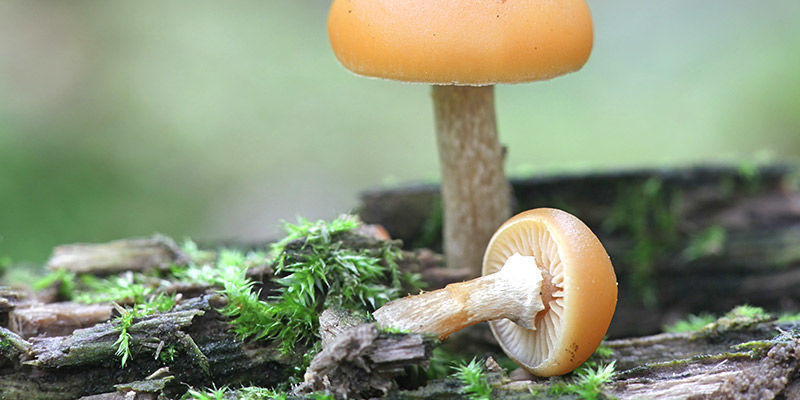
Any mushroom with “skullcap” in its name is likely to be bad news. Just so with Galerina marginata! This toxic mushroom also goes by the equally concerning names funeral bell, deadly skullcap, or deadly galerina. Before it’s fully mature, it looks deceptively similar to Psilocybe cubensis, so be warned magic mushroom hunters! Autumn skullcap grows across the Northern Hemisphere and springs from the ground as the weather starts to cool off in autumn.
Ivory funnel
Containing potentially deadly levels of muscarine, this mushroom (also known as the sweating mushroom) is known to invoke sweats, chills, tremors, and can sometimes even cause death when consumed in high-enough quantities. As its name suggests, it has an almost ghostly hue of off-white, which most of its victims probably take on too! Present throughout Europe and North America, keep clear!
False champignon
Related to the ivory funnel and also containing muscarine, this mushroom is another that causes sludge syndrome—the name given to the toxic effects of muscarine ingestion. Found on lawns and meadows throughout Europe and the US, you might have come across this many times without knowing how deadly it really is.
False morel
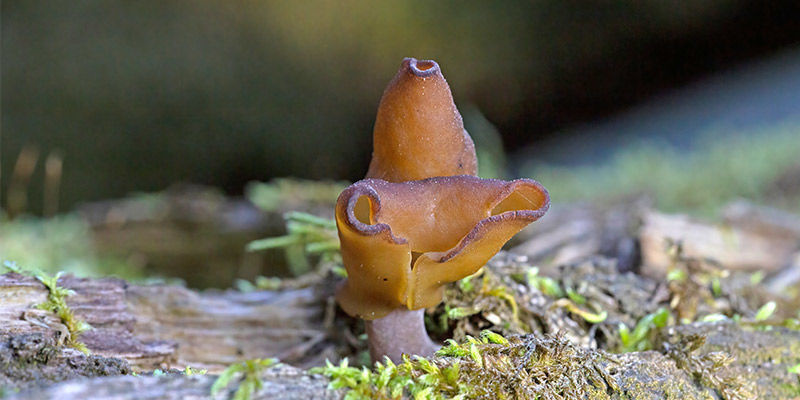
This freaky mushroom, Gyromitra esculenta, looks like a brain or a bundle of coagulated minced meat—so you’re unlikely to eat it accidentally. Though poisonous and potentially deadly, it can actually be eaten if parboiled, and is considered a delicacy in some regions. Be warned, though; this is a dangerous practice and is best avoided.
Shroomshop
Everything for mushroom enthusiasts. Grow kits, truffles, microdosing packs, spore syringes, vials, and cultures.
Red-staining Inocybe
This mushroom grows on the leaf litter of beech trees in summer, and is one of the few mushrooms considered to be commonly deadly. Its taxonomic name is Inosperma erubescens, but it also goes by the colloquial names deadly fibrecap and brick-red tear mushroom.
Deadly dapperling
This toxic mushroom with a great name grows in open grassy areas across Europe and Asia, all the way to East China. Due to its similarity to the edible grey knight, there have been several reported deaths as a consequence of poisoning.
Panther cap
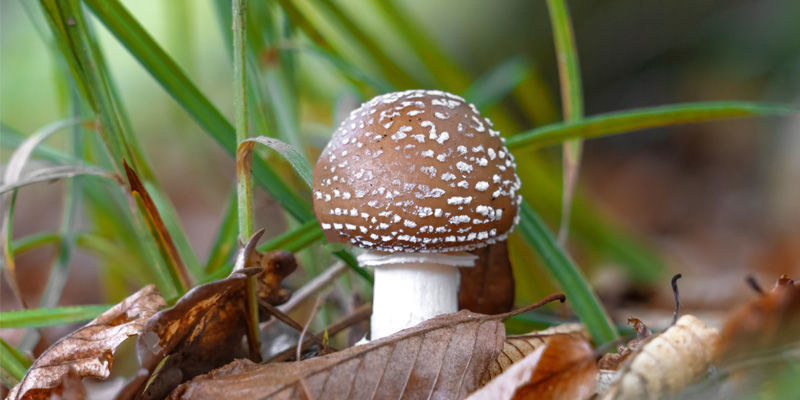
Containing ibotenic acid and muscimol, this mushroom is similar to Amanita muscaria and can cause strong psychoactive effects. In fact, the main reason it is not consumed as much as fly agaric is that it has a far less distinctive cap and thus is harder to identify. It is, however, more potent. Unlike Psilocybe mushrooms, though, Amanita varieties are toxic and can cause extreme discomfort and illness, so taking them as a drug should only be attempted under expert supervision, if at all.
Fly agaric
The famous Amanita muscaria, with its red and white spotted cap and fairy tale connotations, has been used by shamans across Northern Europe and Asia. This colourful toadstool can induce hallucinations and trances when the skin is consumed, or, purportedly, when reindeer urine is drunk. If the whole body is eaten, however, then this mushroom has toxic effects that, while rarely deadly, are extremely uncomfortable and can cause lasting damage.
Red-pored bolete
Rubroboletus pulcherrimus is common across the Pacific Northwest and has one known death to its name. This is a large mushroom, tall and fat, with a distinctive red colouration over the entire body.
Livid pinkgill
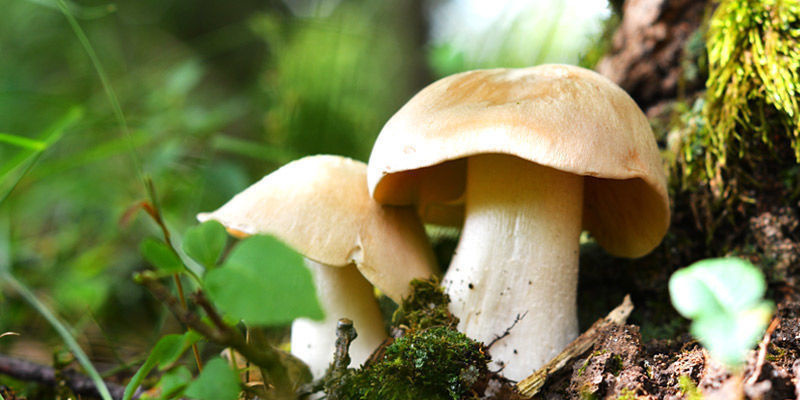
Entoloma sinuatum bears a resemblance to the edible St George’s mushroom, and as such has been implicated in numerous accidental poisonings. There are no known fatalities from ingestion of this mushroom, and usually symptoms are limited to extremely uncomfortable gastrointestinal problems.
Sulphur tuft
This mushroom is broad and yellow and grows on dead wood beneath broadleaf trees. Often found where no other species grow, this is a hardy mushroom that grows in large clumps and is hard to mistake if you know what you’re looking for. It contains toxic steroids that cause significant discomfort when ingested, but aren’t usually fatal.
Woolly milkcap
This mushroom has a very large habitat, and can be found in Northern Africa, Europe, America, and Asia. With a central depression in the middle of its cap, it grows beneath birch trees in mixed forests across a huge range. Though the raw specimen causes irritation to the digestive tract, when cooked, the toxins break down and this species can be eaten, and is popular in Russia and Finland.
Jack-o'-lantern mushroom
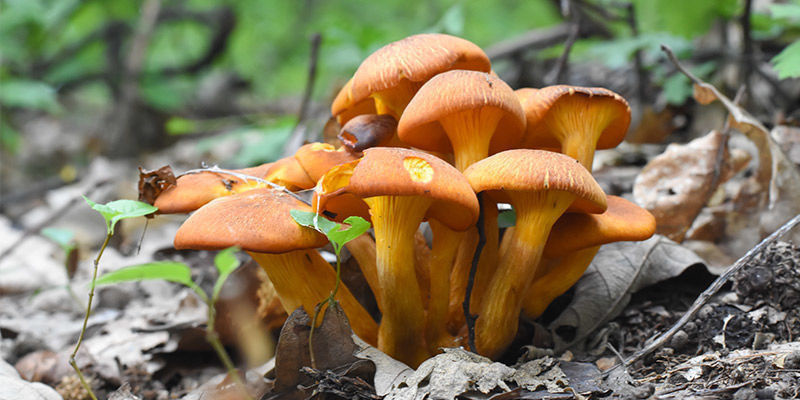
This mushroom grows in huge, bright yellow-orange clumps, making it very hard to miss. In case this wasn’t enough, it even has a weak bioluminescence, meaning it glows at night, making it eerie and interesting. It is supposed that this feature helps to attract insects, which will then distribute its spores over a larger area. Poisoning from this mushroom causes vomiting, diarrhoea, and discomfort, though it isn’t fatal.
False chanterelle
Looking very similar to the tasty chanterelle mushroom, this one can easily be confused. Though toxic, it is not considered dangerous, and most who consume it will get away with minor discomfort—although some can exhibit more alarming symptoms. Tall, yellow, and beautiful, these are not uncommon and can be visually enjoyed if spotted.
Angel wing
This is a beautiful mushroom that looks, as the name suggests, like an angel’s wing. This mushroom was actually considered edible until about 15 years ago when it was implicated in a number of deaths. It has been posited that an unstable amino acid in the mushroom might be deadly to those with pre-existing liver conditions, with death occurring weeks after ingestion. So in case you have an outdated book that suggests you eat this mushroom, consider revising it!
Picking mushrooms in the wild: Be cautious
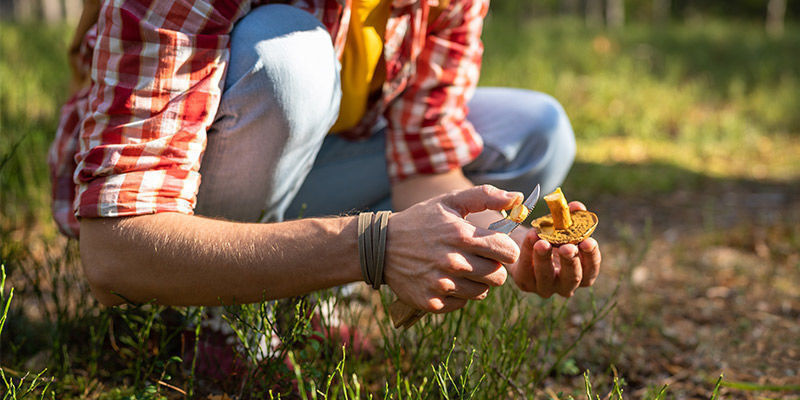
Most poisonous mushrooms aren’t lethal, though their effects can be very uncomfortable. Even so, you must be extremely careful if you ever go foraging, as one wrong bite might be enough to cause disaster. We also have an article about edible mushrooms if you’re interested in the other side of the coin, as there are plenty of delicious ones out there too. But the bottom line is this: if you go foraging, make sure you know what you are doing!
-
 5 min
27 August 2024
How & Why to Grow Mushrooms (Starter Guide)
Growing edible mushrooms at home is a fascinating process that can take many forms and yield very different results. Here we provide a brief overview so you know what you're in for!
5 min
27 August 2024
How & Why to Grow Mushrooms (Starter Guide)
Growing edible mushrooms at home is a fascinating process that can take many forms and yield very different results. Here we provide a brief overview so you know what you're in for!
-
 4 min
3 July 2023
Discover Top 10 Mushrooms For Your Health
With so many varieties of mushrooms available, there's plenty that our funghi friends offer in terms of potential health and well-being benefits for users. What's more is that these mushroom...
4 min
3 July 2023
Discover Top 10 Mushrooms For Your Health
With so many varieties of mushrooms available, there's plenty that our funghi friends offer in terms of potential health and well-being benefits for users. What's more is that these mushroom...
-
 4 min
22 April 2021
How To Make Lemon Tek For A Faster Mushroom/Truffle Trip
Sometimes, you just want to come up hard and fast. Luckily, there's a way. If you're after mind-bending trips in under twenty minutes, you've come to the right place. Just make sure you're prepared...
4 min
22 April 2021
How To Make Lemon Tek For A Faster Mushroom/Truffle Trip
Sometimes, you just want to come up hard and fast. Luckily, there's a way. If you're after mind-bending trips in under twenty minutes, you've come to the right place. Just make sure you're prepared...
-
 4 min
15 September 2015
Magic Mushroom Hunting: A Field Guide
Thinking of joining a mushroom hunting group? Well we have put together a basic guide to hunting mushrooms, ensuring you have the ground knowledge in place.
4 min
15 September 2015
Magic Mushroom Hunting: A Field Guide
Thinking of joining a mushroom hunting group? Well we have put together a basic guide to hunting mushrooms, ensuring you have the ground knowledge in place.





 United States
United States












